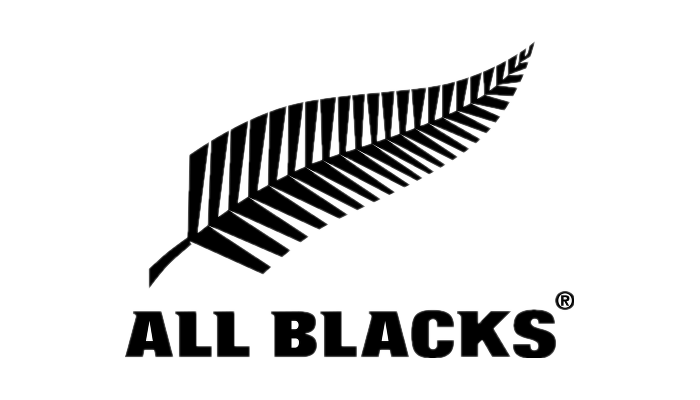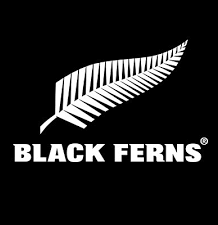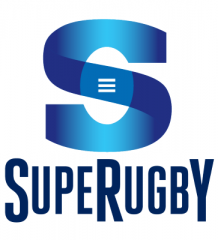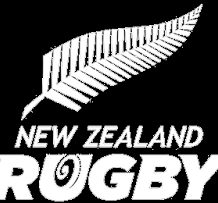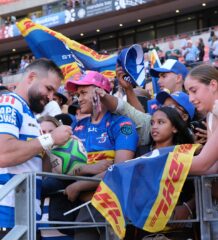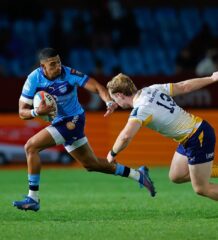New Collective Employment Agreement for New Zealand Rugby
• Increased player payments, education and welfare investment reflect improved revenue forecasts
• Introduction of incentivised Player Savings Scheme alongside KiwiSaver
• Significant centrally funded Incentives Payments to help retain Super Rugby and experienced provincial players
New Zealand Rugby (NZR) and the New Zealand Rugby Players Association (NZRPA) have signed a new Collective Employment Agreement for professional rugby players in New Zealand from 2016 to 2018.
The formal signing of the agreement follows a comprehensive negotiation and ratification process by the NZR Board, Provincials Unions, Super Rugby clubs and the NZRPA.
Highlights of the new Collective Agreement:
• a revenue sharing model maintained with 36.56% of NZR player generated revenue, equating to $191m (up from $121m) over three years due to anticipated increased revenue from the Lions Series, being set aside to allow for an increased investment in player payments, education and welfare initiatives payment increases for all contracted players;
- increased contracting budgets for Super Rugby clubs and a significantly increased NZR allocation towards payment of ‘top up’ retainer payments;
• expansion of the existing Player Payment Pool funded Mitre 10 Cup Incentive Payment aimed at recognising those players who remain committed to this competition and NZR beyond the Super Rugby competition, and, in particular, for experienced players. This incentive payment will now also include experienced non-Super Rugby provincial players. the introduction of an incentivised Player Savings Scheme for Investec Super Rugby and Sevens contracted players. This is in addition to the KiwiSaver scheme;
• the introduction of an illicit drug education and awareness programme, designed to support player health and well-being;
• an agreed framework around players involved in the Brisbane 10s and other offshore Super Rugby games;
• a compulsory induction programme requiring players to undergo a number of modules including respect and inclusiveness, player conduct, mental health and wellness, anti-doping, wagering and corruption and concussion management;
• increasing of the minimum retainers for Provincial Unions Contract and Development Contract Players and retention of the existing salary cap for Provincial Unions;
• Full compensation to Provincial Unions for unavailability of All Blacks;
• expansion of the player personal development programme; and,
• Increased funding for the NZRPA Benevolent and Welfare Fund aimed at assisting Players and their families through a premature career ending injuries or illness and during times of hardship.
The new agreement replaces the existing Collective Agreement and is deemed effective from 1 January 2016 until 31 December 2018.
NZR CEO Steve Tew said the Agreement demonstrated a strong emphasis on investing in players’ and rugby’s future and highlighted an on-going commitment to work in partnership to ensure the growth and success of rugby in New Zealand.
“We’re delighted to have concluded this important piece of work. We believe that our partnership with players continues to be a critical factor in the success of New Zealand Rugby at all levels of the game. And we recognise that that close relationship is part of our competitive advantage.
“In a highly competitive global market, we can’t compete purely on money. For us, the difference has to be in the environment we offer and the strength of our support for players to have the lifestyle they want. This new deal further enhances that while the overall increased and expanded investment across a number of areas, means that our packages are increasingly competitive.
“This Agreement has been developed on the back of some very hard work. I personally want to thank the players, our provincial union partners and the collective negotiation team for their work and commitment to ensuring rugby can continue to inspire and unify New Zealand communities,” Tew said.
NZRPA CEO Rob Nichol also welcomed the formal agreement noting that it serves as a cornerstone of the professional rugby environment in New Zealand.
“This Agreement provides an ongoing level of certainty around the competitions and the overall contracting model, while also resulting in significant additional investment in Player education, retention and welfare, and a fantastic new initiative in the incentivised Player Savings Scheme.
“As with previous Collectives the Players are proud of the results the process and final agreement has produced for rugby in New Zealand but we know we still have on-going challenges and opportunities to address to ensure rugby’s long-term growth and success.”
“We operate in a global sporting and entertainment marketplace that continues to evolve. The Players believe we can never take anything for granted and that we must continue to work hard, create the best environment possible and strive for success.
“We wish to acknowledge and thank New Zealand Rugby, the Super Rugby teams and Provinces. Balancing a global professional sport and the needs for the local community game, in a society with a seemingly never ending the stream of choice for the entertainment dollar and sporting and cultural participation, is far from easy.”
“We will now look forward to some exciting competitions, performances and success stories on the field and continue to work with New Zealand Rugby to ensure the game’s health off it,” Nichol said.
Note: Summary of the CEA follows below
Summary of the NZRU and NZRPA Collective Agreement 2016 – 2018
The major new initiatives and substantive changes contained within this Collective Agreement include:
Term
The agreement will be deemed to have come into force on 1 January 2016 and will expire on 31 December 2018. The three-year term is the maximum allowable under New Zealand employment law and is consistent with previous Collective Agreements between the parties.
Revenue Sharing
Over the three years, 36.56 per cent of NZRU’s Player Generated Revenue will be set aside in a Player Payment Pool and applied for the benefit of players.
Under this agreement, this equates to $191m over three years (up from $121m). However, $15m of this amount is being held back for allocation in future years, due to the revenue proceeds from the once in twelve year Lions tour falling during this period.
The projected payments from the Player Payment Pool are therefore $176m over the three years and consist of the following types of payments:
• Retainer Payments projected to be $119.2m over the three years for:
o Investec Super Rugby
o All Blacks
o All Blacks Sevens
o Women’s Sevens
o Incentive Payments to Super Rugby and experienced Provincial Union Players
• Team Assembly Payments projected to be $18.7m over the three years for:
o All Blacks
o Black Ferns
o Maori All Blacks
o Women’s Sevens
o All Blacks Sevens
• Other player specific payments projected to be $39m over the three years for:
o Player Personal Development Program Funding
o NZRPA Benevolent and Welfare Fund (career ending and hardship financial support)
o KiwiSaver Contributions ($3.5m)
o Incentivised Player Savings Scheme ($9.2m)
o Life, Trauma and Medical Insurance
o Payments to compensate for Rugby Championship All Blacks unavailable for Mitre 10 Cup
o Player Relocation and Accommodation Reimbursement
o Promotional Payments
o NZRPA Funding
Player Contracting
NZR Contracting Environment
The key features in the NZR Contracting environment are:
• NZR provides NZR Retainer payments to certain players on top of their Super Rugby and Provincial Union Retainer payments. These payments have traditionally been targeted at those that form part of the wider All Blacks squad
• The coverage of these top up retainer payments will now extend to include some experienced Super Rugby players
• An amount of $24.8m has been forecast over the three-year period (up from $15.9m) for NZR Retainer payments
• NZR will contract a small group of Under 20 Players on Interim Training Contracts to undertake pre-season training with their home base Super Rugby Club. These Players will not play Super Rugby and will return to provincial and Club rugby on the commencement of the Super Rugby competition.
Super Rugby Contracting Environment
The key features in the Super Rugby contracting environment are:
• Super Rugby Teams can contract up to 32 players by the Super Rugby eligibility in late October each year
o The maximum Super Rugby retainer is $195,000 (up from (190,000)
o The minimum Super Rugby retainer is $75,000 (up from $70,000)
• Super Rugby teams can then select an additional six Draft NZ Rugby Contract (previously Wider Training Group) players through the draft process, who are assembled full time as part of a Super Rugby squad and available for selection, on retainers of $50,000 (up from $40,000)
• Super Rugby team contracting budgets from the Player Payment Pool are now equalised at approx. $4.65m per year per Super Rugby Club from 2017 (up from $4.0m in 2015)
• Revenue generated from the Brisbane Tens tournament will be regarded as NZR Player Generated Revenue. Players will receive a tournament payment of $2,500 with any prize money won being shared amongst the players from the respective team
Provincial Union Mitre 10 Cup Contracting Environment
The key features in the Provincial Union contracting environment are:
• Maximum Provincial Union retainer is $55,000 (status quo)) with the exception of two veteran players per Union who can receive up to $85,000
• Minimum Provincial Union retainer now $21,000 (increased from $18,000) with each Provincial Union required having a minimum 26 players (excluding Investec Rugby Championship All Blacks) on contract for their Mitre 10 Cup campaign
• Replacement Mitre 10 Cup players will be paid $1,250 per week (up from $1,000)
• Non-Super Rugby or Sevens Provincial Union Contracted players will continue to have to study or work, and cannot be required to assemble during the hours of 8.30am and 5pm outside of the 15-week Mitre 10 Cup campaign (including pre-season)
• The Player Payment Pool will make payment of $55,000 for any Investec Rugby Championship All Black with this amount used to reimburse Provincial Unions for the player’s retainer with any difference paid to the player directly (this is an increase over the $50,000 previously reimbursed). The Player Payment Pool has provisioned $6.3m over the three-year period to cover these payments.
• There is an expansion of the existing Incentive Payment Scheme aimed at recognising those players who remain committed to the Mitre 10 Cup competition and NZ Rugby beyond the end of Investec Super Rugby. This incentive payment will now include experienced non-super rugby provincial players. The Incentive Payment is paid by the NZR in addition to a Player’s Retainer payment.
o The Provincial Union only Contract 4 years = $5k
o Provincial Union only Contract 5 + years = $7.5k
o Super Rugby Contract 1 – 2 year = $5k
o Super Rugby Contract 3-4 years = $12.5k
o Super Rugby Contract 5 years plus = $35k
The Player Payment Pool has provisioned $9.8m (up from $3.7m) over the three-year term to cover these payments and they are exempt from the Salary Cap or Super Rugby contracting budgets.
• The level of the salary cap remains at status quo. It is forecast that between them it is expected the M10 Cup Provinces will pay slightly in excess of $15m per year in cash payments to Players.
All Blacks and Women’s Sevens Contracting Environment
The key features of the sevens contracting environment are:
• Increase from a minimum of 16 to 20 Players contracted as part of the All Black Sevens Squad with $4.3m (up from $3.5m) from the Player Payment Pool allocated to All Blacks Sevens Retainer payments
• A Minimum of 16 Players contracted as part of the Black Ferns Sevens Squad with $3.3m (up from $1.9m in previous agreement) from the Player Payment Pool allocated to Retainer payments. Additional Training Contracts available at retainer levels of Tier 1 $15k or Tier 2 $10k.
• Tournament assembly Fees set at $2k per player
• The introduction of a Sevens Legacy Fund of $100k per year for each of the two Sevens Squads which will be pro rata allocated between players based on years of experience
Player Savings Scheme
The new Agreement features the introduction of an incentivised Player Savings Scheme for Super Rugby and Sevens contracted players.
The scheme will contribute $2.50 for every $1 saved by any eligible Player, up to maximum top up the contribution of $12.5k per year.
However, for those with five years’ contract experience or more this contribution will lift to $3 for every $1 saved by the Player, up to a maximum top up the contribution of $15k per year.
All contributions will come from the Player Payment Pool ($9.2m over the three-year term). When combined with the Players own contributions (approx. $3.6m) and KiwiSaver this group of players (approx. 240 players per year) are expected to save in excess of $20m over the three-year term.
Players will be able to access 50% of the proceeds from the scheme at age 34, and the remainder at age 40.
Other Features
Other features of the new Agreement include:
• The commitment to introduce a formalised Induction Program for Provincial Union Development for first time Contracted Players that will be required to be completed before players are eligible to playAdditional investment in the Player Personal Development Program to allow for a greater focus on young developing players, and overseas or retiring players in the key areas of career guidance, education, work experience, financial planning, professional rugby obligations, personal and character development, and mental health and wellness
• The introduction of an illicit drug education, awareness and rehabilitation program incorporating random testing
• An additional contribution to the NZRPA Benevolent and Welfare Fund which aims to financially support Players and their families through career ending injuries or during times of hardship
• The formal adoption of protocol and policies developed over recent years covering the following key integrity and player welfare issues:
o Mental Health and Wellness (including accessing confidential mental health support), Homesickness
o Respect and Inclusiveness
o Agents and the NZRPA Agent Charter
o Concussion
o Supplements
o Anti-doping
o Illicit Drugs (note new education and testing regime from 2016)
o Wagering and corruption
o Social Media
o Player Conduct and Team Functions
• An agreed framework for player participation in the Brisbane 10s tournament and Super Rugby competition games took overseas to international venues
• Improved travel and relocation programmes for Sevens and Super Rugby players
Related Posts
« Players, coach report back to SA Rugby on Springbok season Western Force and Clough to pursue excellence together for the next 3 years »


